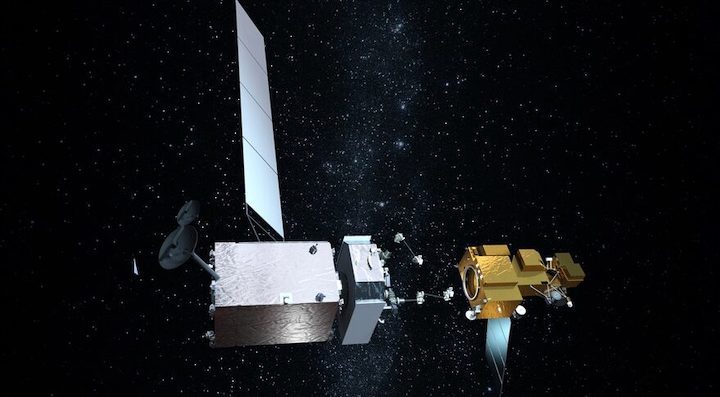29.06.2021

WASHINGTON — NASA has established a working group to examine what new roles the agency can take to mitigate the growth of orbital debris and promote space sustainability.
In a talk at the Secure World Foundation’s Summit for Space Sustainability June 23, Bhavya Lal, senior adviser to the NASA administrator for budget and finance, said she is leading a recently established team that will examine how the agency could take a larger role in efforts to mitigate and remediate orbital debris.
“We’ve assembled an orbital debris review team in-house to evaluate how NASA can be a more effective leader in the area of space sustainability,” she said. “Our goal is to examine how NASA could be a better leader in space sustainability.”
NASA’s efforts in orbital debris research, she said, have focused primarily on protecting the agency’s own missions, from the International Space Station to robotic spacecraft. “We are looking in this review team on things that NASA could be doing beyond what we do in protecting our own assets, being leaders in the broader community,” she said.
Lal didn’t elaborate on the team’s work beyond that it is an internal NASA effort rather than an interagency one. “We hope to be sharing our thoughts with you in the coming months,” she said.
She described tackling the orbital debris problem with a three-prong approach: reducing the creation of new debris, improving tracking of debris and developing ways to remove debris. That’s similar, she argued, to ways of dealing with climate change, with ongoing efforts to reduce emissions, track progress and study ways to sequester greenhouse gases.
It’s also the model outlined in a National Orbital Debris Research and Development Plan, published in January by the White House Office of Science and Technology Policy in the final days of the Trump administration. It identified as three elements of the plan ways to limit the creation of debris, track and characterize debris, and remediate or repurpose debris.
That report recommended that agencies work together to address the research areas identified in the report but did not make any formal assignments. The report listed NASA as having a role in 13 of 14 research areas, the exception being work to improve processing of data for space object catalogs.
Lal endorsed that report. “It is important that we begin to implement this plan,” she said.
One potential area of activity would be active debris removal. NASA is already developing technologies for satellite servicing that could also be used to remove debris. That includes the On-orbit Servicing, Assembly, and Manufacturing (OSAM) 1 mission, formerly known as Restore-L, currently in development.
That’s attracted the attention of some in Congress. “You read in the paper quite a bit — and it seems like more and more — that space debris is becoming a problem,” Sen. Shelley Moore Capito (R-W.V.) said at a June 15 hearing of a Senate appropriations subcommittee on NASA’s budget proposal. “With OSAM-1, since you can repair in-space and elongate the life of a satellite, it could help address that issue.”
Asked about NASA’s interest in active debris removal technology, Lal said the agency was focused more on early-stage technology development efforts rather than operational systems. An example she mentioned was NASA funding of several studies through the NASA Innovative Advanced Concepts program for very early stage technologies.
NASA has not, unlike some other space agencies, funded demonstrations of debris removal technology. During another panel discussion at the conference June 22, one expert warned the United States was in danger of falling behind other nations in this field.
“I do think the U.S. is losing an opportunity” in active debris removal technologies, said Asha Balakrishnan, a research staff member at the Science and Technology Policy Institute. “In order to do it, we need direction, at least in the U.S., on which agency is going to take the lead on doing it and who is going to be funded to do it.”
Removing orbital debris brings with it both technical and policy challenges, but Lal also mentioned the high costs of debris remediation. Pilot projects funded by the European Space Agency and Japan Aerospace Exploration Agency to remove objects have a cost of more than $1 million per kilogram, she noted. Given current estimates of more than 8,000 metric tons — 8 million kilograms — of debris in orbit, “we’re talking about trillions of dollars of debris removal,” she said.
“This is a challenge, but, of course, it’s also an opportunity,” she said. “Space is a big, diverse and innovative sector, and together we can come up with amazing approaches that don’t just involve technology but also regulatory, policy and other kinds of innovations.”
Quelle: SN
